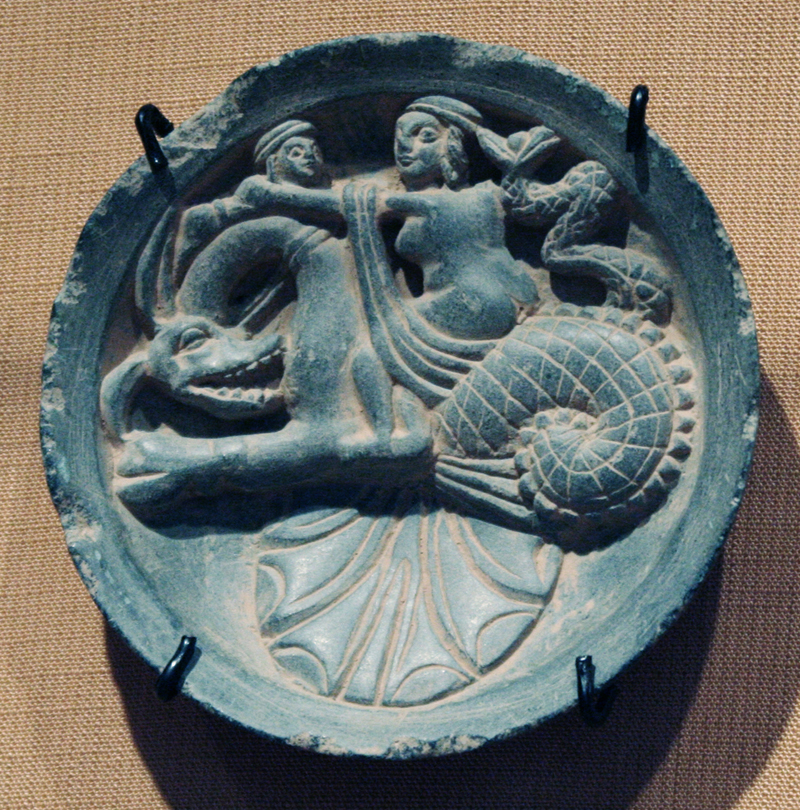
Unknown
Ancient Gandhara, present-day Pakistan
Dish with Woman Riding on Sea Creature, 1st c. BCE - 1st c. CE
grey schist
7/8 x 5 1/4 in.
SBMA, Gift of Jane Werner Watson
1992.81.1
When Dr. Pratapaditya Pal, former Senior Curator of Indian and Islamic Art at LACMA reviewed our collection in August, 1995, he pronounced this dish to be "a superlative example."
RESEARCH PAPER
This small, round dish carved from grey schist in the 1st or 2nd century B.C./A.D. comes from the ancient Gandharan region of India that is present-day Pakistan.
The mystery of these small dishes has yet to be solved, for we still have no idea why they were made or what purpose they served, if any. They must have been extremely popular, for like the Buddhist sculpture of this period, many examples are carefully preserved in museums. Similar objects have been found as far away as Egypt, since the Gandharan region was one of the busiest cultural crossroads lying in the path of all. Due to later invasions of India, few historical sources of the Gandharan period remain. In fact, most of the information has come from coins.
Gandharan art is primarily associated with Buddhist art which during this period, 1st-7th Century A.D., produced interesting, albeit-awkward combinations of Greco-Roman and Indian styles. These dishes reveal a more relaxed picture of the past. Always non-Buddhist with Classical subjects, these dishes might represent an "Amorous Couple", "Couple with Wine Cups", a "Drinking Scene", or the SBMA example "Woman Riding on a Sea Creature".
A dish in the Karachi Museum with similar title and design describes "a woman mounted on a sea creature, nude, with a shawl over her legs. She is seen from the back, her head in left profile, and with a child in her outstretched left arm."1
The decoration of these dishes generally occupied one half to two-thirds of the circular space, often creating a plain compartment at the bottom. The SBMA example is an exception, for the fine high-relief work covers the entire space. All of these dishes were carved in such a bold, animated style as to make us want to know about their use.
1 Ingholt and Lyons, Gandharan Art in Pakistan, p. 177.
BIBLIOGRAPHY
Ingholt, H., and Lyons, I., Gandharan Art in Pakistan. Hamden, CT,1957.
Harle, J.C., Art and Architecture of the Indian Subcontinent Penguin Books Ltd. 1986.
Rowland, B., The Art and Architecture of India, Pelican History of Art, 3rd,ed., Harmondsworth, 1981.
Prepared for the SBMA Docent Council by Helen Tomkins. n.d.
POSTSCRIPT
Prior to 2012, this object has also been titled and referred to as, Cosmetic Tray with Nereid on Aquatic Dragon
(DISH WITH WOMAN RIDING ON SEA CREATURE).
